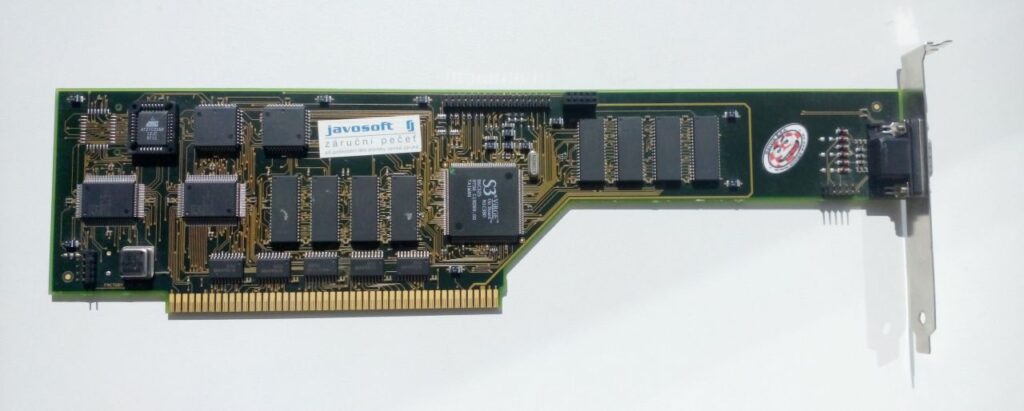CyberVision 64/3D is a graphics accelerator for Zorro II/III slots used in professional Amiga computers. It was introduced in 1996 and uses S3 ViRGE chipset which was for a very short time period something like a leader of the home 3D graphics market (ViRGE stands for Virtual Reality Graphics Engine).
S3 ViRGE (86C325) was designed for PCs with PCI bus so Phase5 developers had to add some programmable logic to convert signals from the Zorro bus used in Amiga. The card is autosensing and can work with Amiga 2000 (1987) where only 16bit slots are used. Full 32bit transfers are available when the card is inserted in newer Amiga computers (A3000, A4000).
The first problem was high price ($399) when compared to the PC world. You could buy a way more powerful 3Dfx Voodoo Graphics PCI accelerator board for $299 and there was plenty of decent 2D cards under $100 for standard PCs. In addition to price there was no support for OpenGL 3D acceleration in Amiga OS in mid-90s. The main reasons for buying this card were its fast 2D acceleration (in comparison with outdated Amiga on-board chipsets) and support for 1024×768 with 16 millions of colors on a standard VGA monitor.


I have that card for the Amiga 3000. No software to support….
You can get the disk files at phase 5 website and also at Amiga hardware database website.
I have one in a supped up A1500 (rev 6 b2000 mobo). I managed to save the original install disks to add before they rotted. The drivers I mentioned in the websites are newer than mine. There’s both upgrade and full install disks on those sites.
I didn’t check, but likely a decent chance you may find other drivers for this on the internet archive.
I did a fresh install on wb 3.1 an os 3.1 and all went well. The original driver gave option for Zorro II or Zorro III. For A3000 you need the newer Zorro III option. The defaults worked well for me. I do enable the cool retro splash screen as I know the driver is working properly when I see that, especially if a pcs or ecs native display is selected.
Good card for 2D, but I never thought too much of 3D. Best I ever saw was around 10 FPS in 3D. And that’s on a 68060 A1500. 2D was outstanding. Probably limited performance by Zorro II (which is both slow at under 10MB/s on a good day and memory address space limitations, which Zorro III solves mostly on both counts). Good luck 🙂
3D accelerators from this era mostly did not provide acceleration for triangle setup. Thus, feeding them with polygons to rasterize was a CPU demanding task. 060 was not the best performer for this, so I am not surprised the fps was low everywhere.
But as you said, it is a great 2D chip (with a very good video acceleration too, including MPEG decoding).